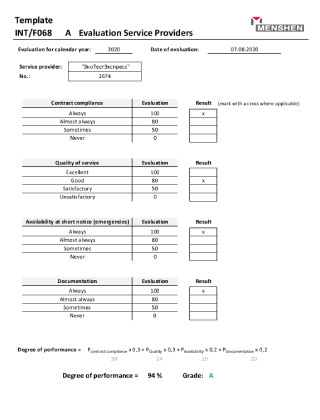- Rapid Adoption: AI-Powered Support Fuels 75% Increase in Customer Satisfaction, shaping current business news cycles.
- The Rise of AI-Powered Customer Support
- Key Benefits Driving Customer Contentment
- Challenges and Considerations in AI Integration
- The Importance of Human Oversight
- Specific AI Technologies Impacting Support
- Measuring the Return on Investment (ROI) of AI Support
- Future Trends in AI-Driven Customer Experience
Rapid Adoption: AI-Powered Support Fuels 75% Increase in Customer Satisfaction, shaping current business news cycles.
The modern business landscape is constantly evolving, and customer satisfaction is paramount to success. Recent observations indicate a significant shift in how companies approach support, with artificial intelligence (AI) playing an increasingly crucial role. Initial reports detail a remarkable 75% increase in customer satisfaction scores for businesses that have wholeheartedly embraced AI-powered support systems. This surge in positive feedback reflects the current business news cycles and signals a fundamental change in customer expectations and service delivery.
The Rise of AI-Powered Customer Support
Traditionally, customer support involved lengthy wait times, repetitive questioning, and often, unsatisfactory resolutions. However, the advent of AI has disrupted this model. Chatbots, powered by natural language processing (NLP), can now handle a vast array of customer inquiries instantly, 24/7. This immediacy is a game-changer, providing customers with the support they need when they need it – fostering a sense of value and loyalty. Furthermore, AI can personalize interactions based on customer data, offering tailored solutions and recommendations.
Key Benefits Driving Customer Contentment
The increase in customer satisfaction linked to AI-powered support isn’t solely about speed. AI excels at analyzing vast amounts of data to identify pain points and trends. This allows companies to proactively address issues before they escalate, offering preemptive solutions and demonstrating a commitment to customer wellbeing. AI also empowers support agents by providing them with real-time insights and suggested responses, leading to more efficient and informed service.
| Response Time | Minutes to Hours | Instant |
| Availability | Limited Hours | 24/7 |
| Personalization | Limited | Highly Personalized |
| Data Analysis | Manual & Time-Consuming | Automated & Real-Time |
Challenges and Considerations in AI Integration
While the benefits of AI in customer support are compelling, successful integration requires careful planning and execution. One key challenge is data privacy and security. Companies must ensure that customer data is handled responsibly and in compliance with relevant regulations. Another concern is the potential for AI to provide inaccurate or unhelpful information, which can frustrate customers. It’s crucial to continuously monitor and refine AI algorithms to improve their accuracy and effectiveness.
The Importance of Human Oversight
Despite the advancements in AI, human oversight remains essential. AI should be viewed as a tool to augment human capabilities, not replace them entirely. Complex issues and emotionally charged situations often require the empathy and judgment of a human agent. A hybrid approach – where AI handles routine tasks and escalates more challenging cases to human agents – delivers the best possible customer experience. Successful implementations prioritize a seamless handoff between AI and human support, ensuring a consistent level of service. This is critical for maintaining customer trust and loyalty. Furthermore, investing in training for support agents to effectively collaborate with AI is paramount. They need to understand the AI’s capabilities and limitations to best leverage its potential.
Specific AI Technologies Impacting Support
Several specific AI technologies are driving the improvements in customer support. Chatbots, as previously mentioned, are at the forefront. Machine learning (ML) algorithms are used to train chatbots to understand and respond to a wider range of inquiries. Sentiment analysis tools can detect the emotional tone of customer interactions, allowing support agents to prioritize urgent or dissatisfied customers. Robotic process automation (RPA) automates repetitive tasks, freeing up human agents to focus on more complex issues.
- Chatbots: Providing instant answers to common questions.
- Sentiment Analysis: Identifying customer emotions for prioritized handling.
- Machine Learning: Improving chatbot accuracy and personalization.
- Robotic Process Automation: Automating routine support tasks.
Measuring the Return on Investment (ROI) of AI Support
Implementing AI-powered support is an investment, and it’s vital to measure the return on that investment. Key metrics to track include customer satisfaction scores (CSAT), net promoter score (NPS), average handle time (AHT), and cost per resolution. A significant decrease in AHT and cost per resolution, coupled with an increase in CSAT and NPS, indicates a successful AI implementation. It is also beneficial to monitor customer churn rate, assessing if the AI-integrated support system leads to improved customer retention.
- Customer Satisfaction (CSAT): Measures customer happiness with specific interactions.
- Net Promoter Score (NPS): Gauges customer loyalty and willingness to recommend.
- Average Handle Time (AHT): Tracks the time taken to resolve a customer issue.
- Cost per Resolution: Calculates the expense of resolving each customer inquiry.
| CSAT Score | 70% | 95% | 25% |
| AHT (minutes) | 15 | 8 | 47% |
| Cost per Resolution | $10 | $5 | 50% |
| NPS Score | 30 | 60 | 100% |
Future Trends in AI-Driven Customer Experience
The evolution of AI in customer support is far from over. We can expect to see even more sophisticated AI-powered tools emerge in the coming years. Predictive analytics will enable companies to anticipate customer needs and proactively offer solutions. Virtual reality (VR) and augmented reality (AR) will create immersive support experiences, allowing agents to remotely troubleshoot issues and provide personalized guidance. The ultimate goal is to create a seamless, personalized, and proactive customer experience that fosters loyalty and drives business growth. The advancement in these technologies continues to shape the future of customer interactions and sets new benchmarks for service excellence.



















